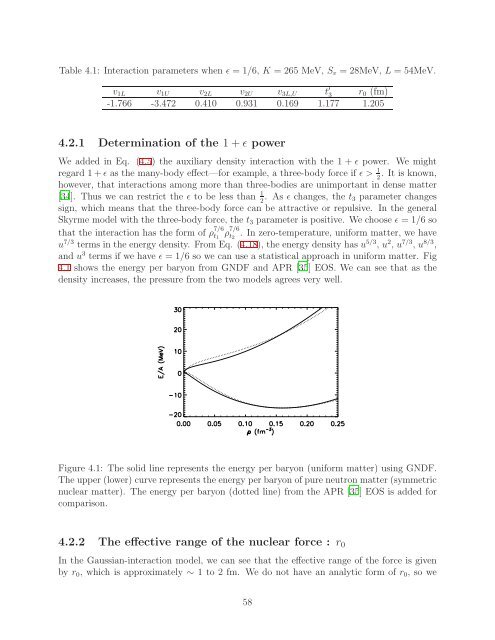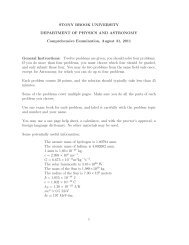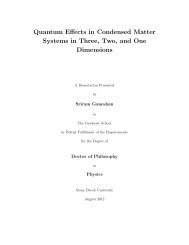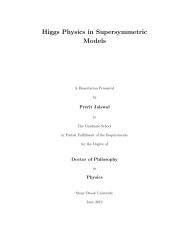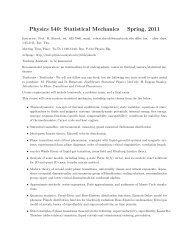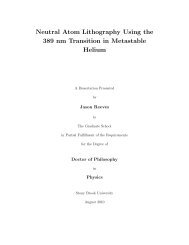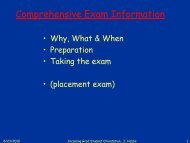Theory of Nuclear Matter for Neutron Stars and ... - Graduate Physics
Theory of Nuclear Matter for Neutron Stars and ... - Graduate Physics
Theory of Nuclear Matter for Neutron Stars and ... - Graduate Physics
You also want an ePaper? Increase the reach of your titles
YUMPU automatically turns print PDFs into web optimized ePapers that Google loves.
Table 4.1: Interaction parameters when ǫ = 1/6, K = 265 MeV, S v = 28MeV, L = 54MeV.v 1L v 1U v 2L v 2U v 3L,U t ′ 3 r 0 (fm)-1.766 -3.472 0.410 0.931 0.169 1.177 1.2054.2.1 Determination <strong>of</strong> the 1+ǫ powerWe added in Eq. (4.5) the auxiliary density interaction with the 1 + ǫ power. We mightregard 1+ǫ as the many-body effect—<strong>for</strong> example, a three-body <strong>for</strong>ce if ǫ > 1 . It is known,2however, that interactions among more than three-bodies are unimportant in dense matter[34]. Thus we can restrict the ǫ to be less than 1 . As ǫ changes, the t 2 3 parameter changessign, which means that the three-body <strong>for</strong>ce can be attractive or repulsive. In the generalSkyrme model with the three-body <strong>for</strong>ce, the t 3 parameter is positive. We choose ǫ = 1/6 sothat the interaction has the <strong>for</strong>m <strong>of</strong> ρ 7/6t 1ρ 7/6t 2. In zero-temperature, uni<strong>for</strong>m matter, we haveu 7/3 terms in the energy density. From Eq. (4.18), the energy density has u 5/3 , u 2 , u 7/3 , u 8/3 ,<strong>and</strong> u 3 terms if we have ǫ = 1/6 so we can use a statistical approach in uni<strong>for</strong>m matter. Fig4.1 shows the energy per baryon from GNDF <strong>and</strong> APR [35] EOS. We can see that as thedensity increases, the pressure from the two models agrees very well.Figure 4.1: The solid line represents the energy per baryon (uni<strong>for</strong>m matter) using GNDF.The upper (lower) curve represents the energy perbaryon <strong>of</strong>pure neutronmatter (symmetricnuclear matter). The energy per baryon (dotted line) from the APR [35] EOS is added <strong>for</strong>comparison.4.2.2 The effective range <strong>of</strong> the nuclear <strong>for</strong>ce : r 0In the Gaussian-interaction model, we can see that the effective range <strong>of</strong> the <strong>for</strong>ce is givenby r 0 , which is approximately ∼ 1 to 2 fm. We do not have an analytic <strong>for</strong>m <strong>of</strong> r 0 , so we58


